Handloom and Textile
Overview
The Handloom Sector is the second largest employer in our country. It represents continuity of age old Indian heritage of hand weaving and reflects the socio-cultural traditions of the weaving communities. It is one of the most important cottage industries in Assam. In rural areas, handloom weaving is regarded as one of the most important activities and most of the rural women folk get engaged in hand weaving activities. Handloom textile cottage industry plays an important role in the socio-economic life of Assamese people. It is one of the major ways of earning livelihood next to agriculture of Assamese rural people. Assamese women from commoners to the royal houses and irrespective of caste, creed, religion, status and pursuit had woven all their required clothes and garments and other household apparels by themselves. As such Government of Assam is paying more importance for uplift of the socio-economic status of the female by launching various schemes relating to handloom technology through the Directorate of Handloom & Textiles, Assam, Guwahati and it offices / institutions situated in the different districts of the state.
Handloom & Textiles Department has an important role in enhancing the subsidiary income source through handloom weaving for the societies of the district of Chirang, BTR, Assam as there are many individuals connected to handloom weaving activities since time immemorial. The figure of individuals involved in weaving activities stands at 24196 and 24200 numbers of households are connected to handloom weaving activities according to 4th Nationwide Handloom Census carried out M/s. Karvy Data Management, Hyderabad in the year 2017-18 and declared by the Ministry of Textiles, Govt. of India in August, 2019. The agency entrusted to conduct the 4th Nationwide Handloom Census in the district, conducted survey at the sub-districts viz. i. Borobazar, ii. Borobazar Development Block, iii. Dangtola, iv. Sidli-Chirang, v. Sidli-Chirang Pt. and vi. Sidli Chirang Development Block. Some handloom weaver-concentrated areas of the district have been left out and as such weavers of those areas could not find place in the Census. The handloom weavers of the district can be categorized as Individual Weaver, Master Weaver and Weavers’ Co-operative societies.
The Bodos and certain other communities belonging to Scheduled Tribe, Scheduled Caste and Other Backward Classes of the District have inborn skill in hand weaving. Majority of the weavers use traditional methods and appliances while a certain groups apply improved looms and devices for production of fabrics. As mostly women folk are involved in weaving activity and produce only the quantity of fabrics for their domestic need, it implies a minimal contribution to the economic growth of the society and to the District as a whole. Further, Handloom weaving as a cottage industry is confronting a tough challenge posed by Power loom products. Although weavers of District happen to be quite skilled, they lag behind in quality and quantity production of fabrics and thus fetch low income against their hard work. These factors have impeded them to adopt handloom weaving as their profession and failed to attract others and their male counterpart towards weaving activities. However, their artistic products have high demand in the market and these are cherished from other parts of the country as well as those from abroad. Their products like – dokhona, aronai, jwmgra, mekhela, chaddar, saree, gamocha, eri-stole and certain other home furnishing products arecherished by all. But quantity of products seems to be quite low and hence cannot meet demand of all.
In view of above, Handloom & Textiles Department need to exercise the following steps for the weaver-communities of the District with an objective of ensuring greater earnings to them and thus contribute to economic growth of the district:-
Objectives:
- Skill Development programmes for weavers at different weaving clusters in the District in order that they produce quality and quantity products;
- Assistance to upgrade their existing units of loom and Grant-in-aids in the form of Fly Shuttle Frame loom with accessories and quality yarn to the needy.
- Set-up of Yarn Bank at their easy access;
- Construction of weaving sheds so as to enable them to weave fabrics throughout the year;
- Support in supply of power / power devices for enabling them to weave clothes even during evening hours;
- Facilitate them Credit linkage with financial institutions aiding them to set up industries;
- Proper market linkage for their products in both forms of Online i.e. e-marketing and Offline mode;
- Promotional activities such as organization of exhibitions and expos to display their products to attract larger nos. of customers;
- Implementation of “Handloom Mark” scheme to ensure genuineness of handloom products and to promote quantum marketing of their products;
- Steps to bring the individual weaver under organized sector;
- Managerial training to set up their organized entities as gainful and resourceful; and
- Implementation of Comprehensive Welfare Schemes for weavers of the District.
Functionaries of the Department:
Sl. No. |
Name of Offices / Sub-offices |
Located at
|
No. of employees
|
Remarks
|
|
|
1
|
Office of the
|
Kajalgaon
|
i. Asstt. Director
|
1
|
|
|
|
|
Assistant
|
|
ii. Sr. Inspector / Auditor (Coop)
|
1
|
|
|
|
|
Director,
|
|
iii. Jr. Inspector / Auditor (Coop)
|
1
|
Under the
|
|
|
|
Handloom &
|
|
iv. Demonstrator (Circle)
|
1
|
establishment
|
|
|
|
Textiles, Chirang
|
|
v. U.D. Asstt.
|
1
|
of Assistant
|
|
|
|
|
|
vi. L.D. Asstt.
|
2
|
Director,
|
|
2
|
Handloom
|
Bengtol
|
i. Instructor
|
1
|
Handloom &
|
|
|
|
Training Centre
|
|
ii. Demonstrator
|
1
|
Textiles,
|
|
|
|
|
|
Chirang
|
|
||
iii. Jugali, Gr. IV
|
1
|
|
||||
|
|
|
|
iv. N/C, Gr. IV
|
1
|
|
|
3
|
Office of the
|
Bijni
|
i. Superintendent
|
1
|
|
|
|
|
Superintendent,
|
|
ii. Inspector
|
1
|
|
|
|
|
Handloom &
|
|
iii. Jr. Inspector / Auditor (Coop)
|
1
|
|
|
|
|
Textiles, Bijni
|
|
iv. U.D. Asstt.
|
1
|
Under the
|
|
|
|
|
|
v. L.D. Asstt.
|
1
|
establishment
|
|
|
|
|
|
vi. N/C, Gr. IV
|
1
|
of Superinten-
|
|
4
|
Handloom
|
Borlawgaon
|
i. Instructor
|
1
|
dent,
|
|
|
|
Training Centre
|
|
ii. Demonstrator
|
1
|
Handloom &
|
|
|
|
|
|
Textiles, Bijni
|
|
||
iii. Jugali, Gr. IV
|
1
|
|
||||
|
|
|
|
iv. N/C, Gr. IV
|
1
|
|
|
5
|
Weavers
|
Bijni
|
i. Inspector
|
1
|
|
|
|
|
Extension Service
|
|
ii. Demonstrator
|
2
|
|
|
|
|
Unit
|
|
iii. Peon, Gr. IV
|
1
|
|
|
|
|
|
|
iv. N/C, Gr. IV
|
1
|
|
The Department performs the following for the greater interest of the handloom weavers of the district in particular:
-
- In the context of skill development and capacity building of the weavers, the two Handloom Training Centres (HTC) located at Bengtol and Borlawgaon conduct one year Artisan Course every year commencing from 1st March of the year till 28th February of the following year imparting training to 30 nos. of trainees of the district. The one year Artisan Course covers training syllabi of basic weaving on handloom till introduction to appliances of improved and modern handloom weaving devices. Weaving Mechanism, Weaving Calculation and Fabric Structure & Analysis and also basics of treatment to yarn and fabrics are taught to the admitted trainees. The BTC authority notifies the Advisory Committee for selection of 15 nos. of trainees for each HTC and the Committee conducts selection process in the month of February every year in intimation conveyed by the Instructor of the HTC who is also the member secretary of the Committee.
- Besides regular one year Artisan Course, certain skill up gradation training programmes in order to develop skill of weavers and enable them to produce finer fabrics are organized at different weaver concentrated areas of the district.
- Weavers Extension Service Unit (WESU) situated at Bijni serves the registered weavers, especially of BPL category, by supplying yarn to them for production of variety of fabrics and collects the products back from the weavers by paying the due remunerations / wages to them. The technical officials of the WESU guide the weavers in quality maintenance of the products with the usage of actual count of yarn and maintaining standard specification of sizes of various clothes. Weavers are also motivated for production of larger quantity of fabrics for greater earnings.
- With an aim of enhancement of handloom fabric production, the Deptt. has constructed a few numbers of Common Facility Centres, Common Work Sheds and Individual Work Sheds at different locations of the district. Certain primary weavers’ co-operative societies (PWCS) have been allotted with the Common Facility Centres and Common Work Sheds for production of fabrics and enhance their income generation.
-
- The Department organizes exhibitions and expos to display weavers’ products and attract larger nos. of customers. Marketing of products of PWCS, SHGs and artisans are prioritized under the sponsored programmes of Development Commissioner for Handloom, Ministry of Textile, Govt. of India. These enable weavers find market linkages for their products. Bodoland Regional Apex Weavers & Artisans Co-operative Federation Ltd. (BRAWFED) and Assam Apex Weavers & Artisans Co-operative Federation Ltd. (ARTFED), the two apex bodies of the state help weavers of the district in sale of their products and thus sustain their handloom weaving activities.
- Weavers especially belonging to BPL category of the district have been provided with yarn bundles and also fly shuttle looms with accessories almost every year by the Deptt. Of Handloom & Textiles, BTR through SOPD fund.
- Some weavers of the district have been assisted by the Deptt. with credit linkages to financial institutions i.e. different bank branches of the district under the Micro Units Development and Refinance Agency (MUDRA) Loan Scheme to Handloom Weavers to set up industries of their own.
- Comprehensive Welfare Scheme for handloom weavers, a component of National Handloom Development Programme viz. PMJJBY & PMSBY has been implemented in the district from the year 2017-18.
- The State Govt. of Assam, through the Directorate of Handloom & Textiles, Assam proposed to procure Traditional Hand-woven items directly from the indigenous weavers without involving any middlemen through the Assam Apex Weavers and Artisans Cooperative Federation Ltd. (ARTFED) and Assam Government Marketing Co-operation (AGMC) Limited under State Flagship Scheme “Swanirbhar Naari”. The procured items will be sold through showrooms of ARTFED and AGMC Limited in and outside of the State including existing e-marketing platforms. The weavers will be imparted quality training to upgrade their skills in Handloom Training Centres and Institutes. Majority of the weavers use traditional machinery. It is proposed to integrate modern technology to improve the pattern, quality and productivity. The weavers will be encouraged and assisted to acquire various certifications. In this regard, around 17340 individuals of the district applied for registration and out of them 16647 have been approved after due verifications by the deptt. officials. Procurement process of traditional Hand-woven items directly from the indigenous weavers started from the month of January, 2023.
|
Number of Applications for Registration |
Number of weavers Registered |
Number of Applicants Rejected |
Remarks |
|
17340 |
16647 |
963 |
Through 3 nos. of Procurement Centres set up for the district for procuring Traditional Hand-woven items, 20815 pcs. of Aronai, Bihuwan, Rajbongshi Gamocha, General Gamocha etc. costing Rs. 5347955.00 (Fifty three lacs forty seven thousand nine hundred fifty five only) have been procured. 3268 weavers form the district participated in the scheme. |
Some clips on “SWANIRBHAR NAARI SCHEME”
Hon’ble MLA Sjt. Jayanta Basumatary along with Deputy Commissioner Shri. P. Vijaya Bhaskar Reddy, IAS, Chirang Inaugurating one procurement centre on 13th January, 2023, Hon’ble Minister Sjt. U. G. Brahma, i/c Handloom Textiles, Sericulture etc., Govt. of Assam, reviewing procurement process and some weavers in queue to sell their hand-woven products
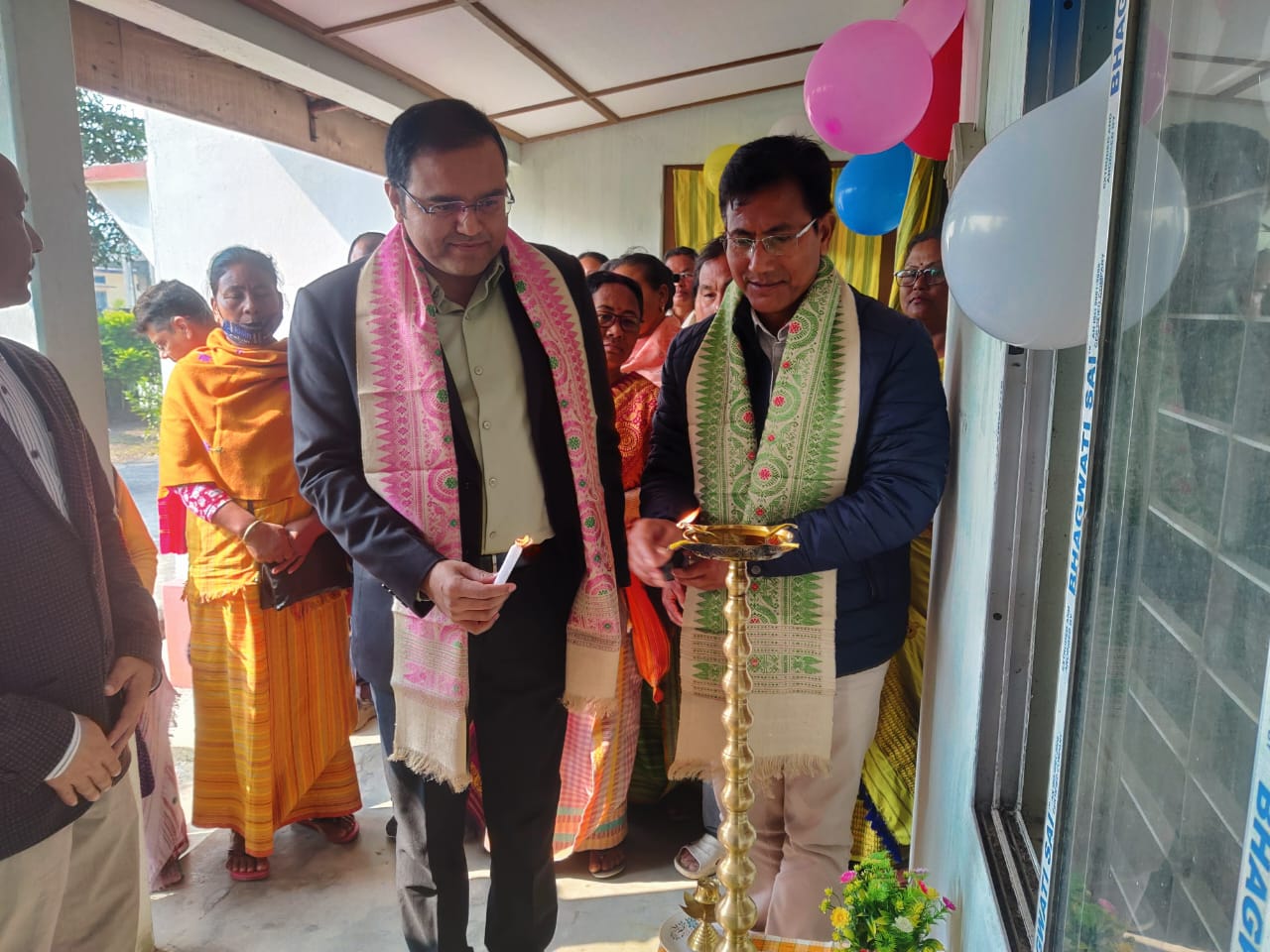
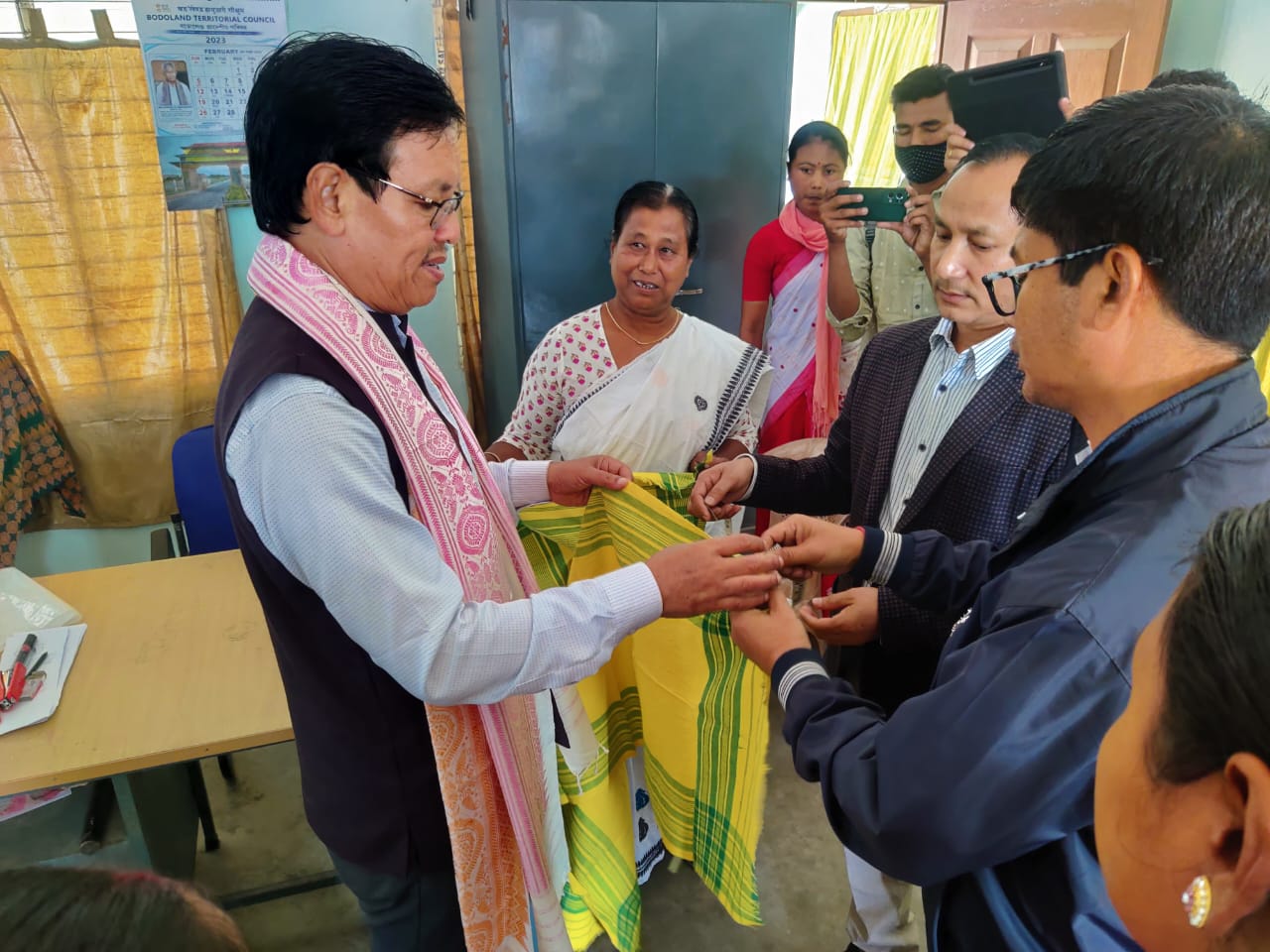
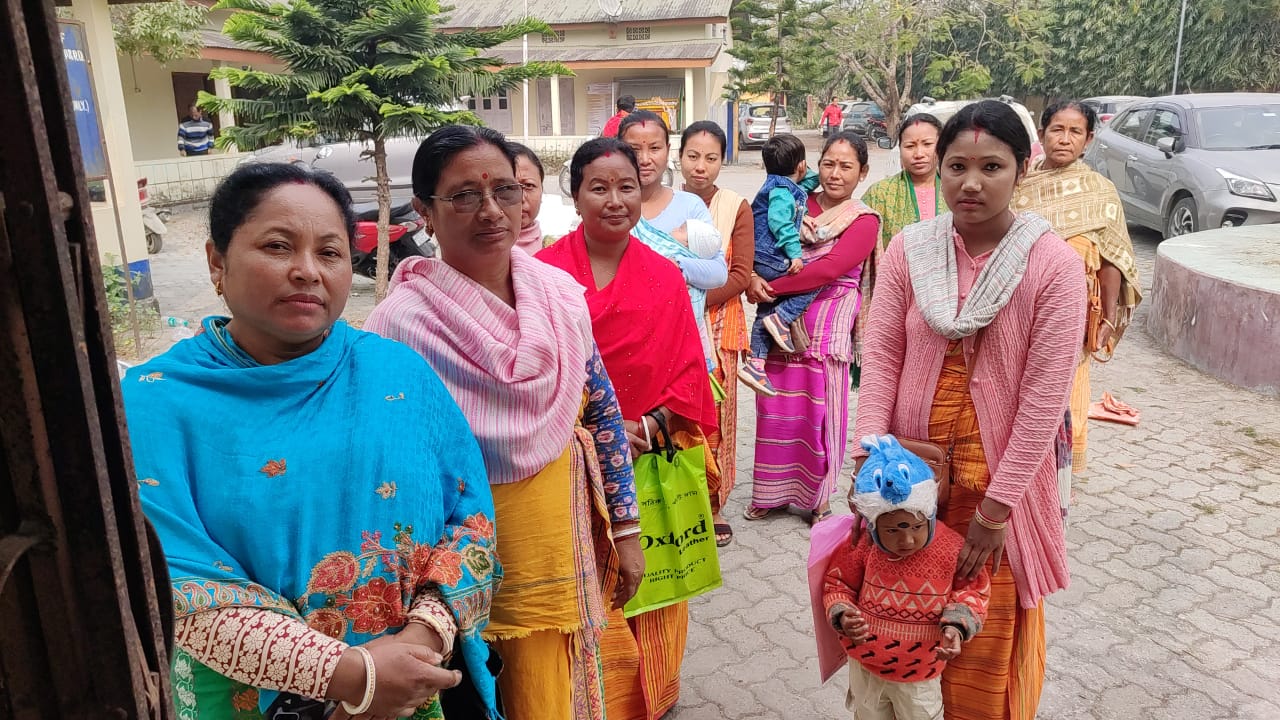
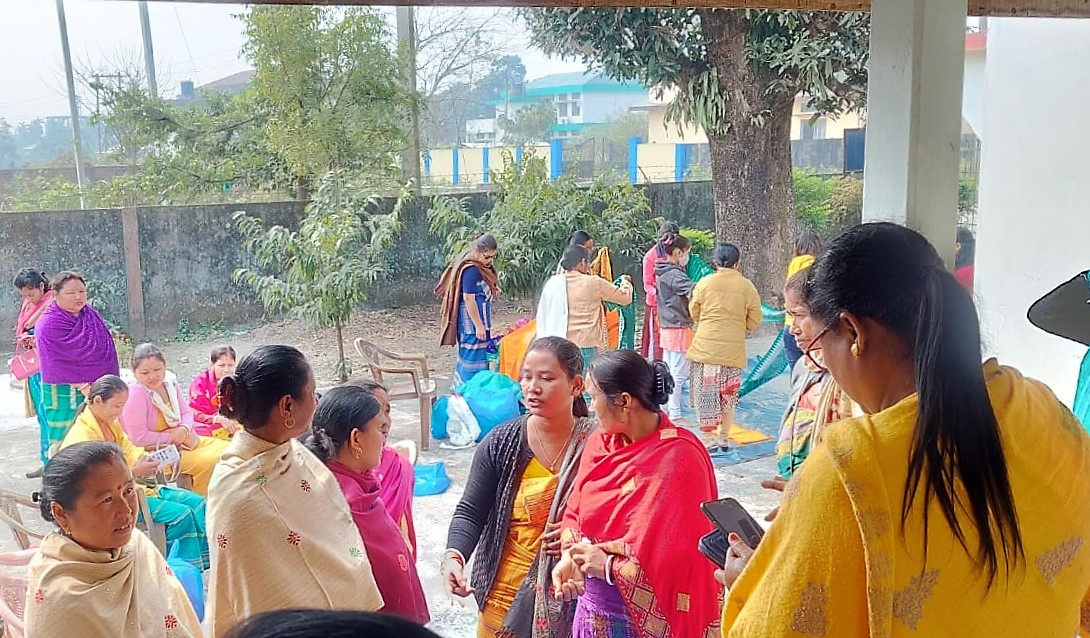
Distribution of Fly Shuttle Frame Loom & Jacquard machines with accessories to selected weaver beneficiaries of the district for the year 2021-2022, SOPD-BTC by Sri. Dhananjay Basumatary, Hon,ble EM, H&T Deptt. BTC, District Administration and Deptt. Officials.

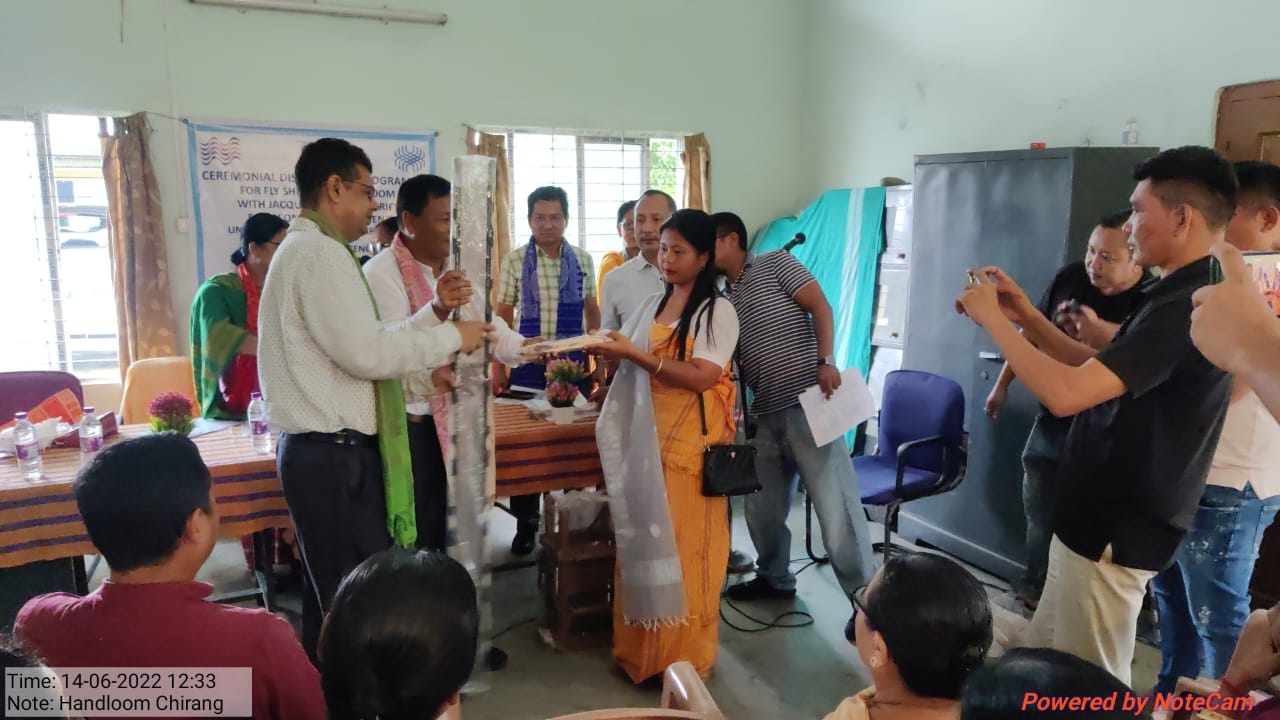
SUCCESS STORIES
(Beneficiaries of “Mudra Loan to Weavers” Scheme)
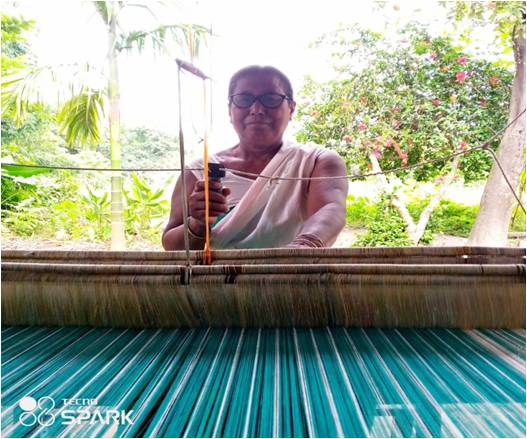
C/o. Lt. Katimal Ray
Vill: Sakati Ujanpara
P.O: Fulguri, Dist: Chirang, BTR
Contact No. 7636908711
She has set up her own handloom industry at home after availing Mudra loan of Rs. 50,000/- in the year 2019-20. She weaves Mekhela Chaddar (Assamese women dress) and is earning net profit of Rs. 9000.00 per month.
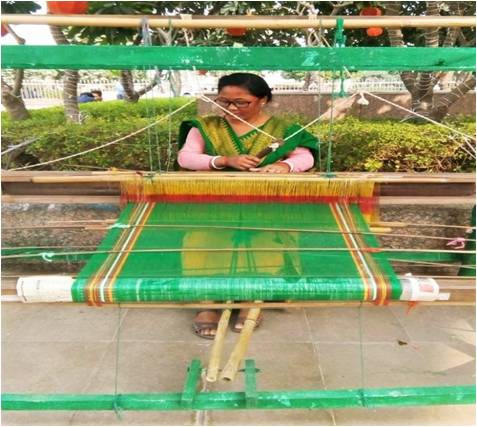
Vill & P.O: Khagrabari
Dist: Chirang, BTR
Contact No. 9613175570
She has set up her own handloom industry at home after availing Mudra loan of Rs. 50,000/- in the year 2019-20. She is producing clothes (than) for garment making and is earning net profit of Rs. 7470.00 per month.
Sd/
Asstt. Director,
Handloom & Textile, Chirang
| Title | Size | Type |
|---|---|---|
| Handloom & Textile, Chirang | 1.73 MB |


